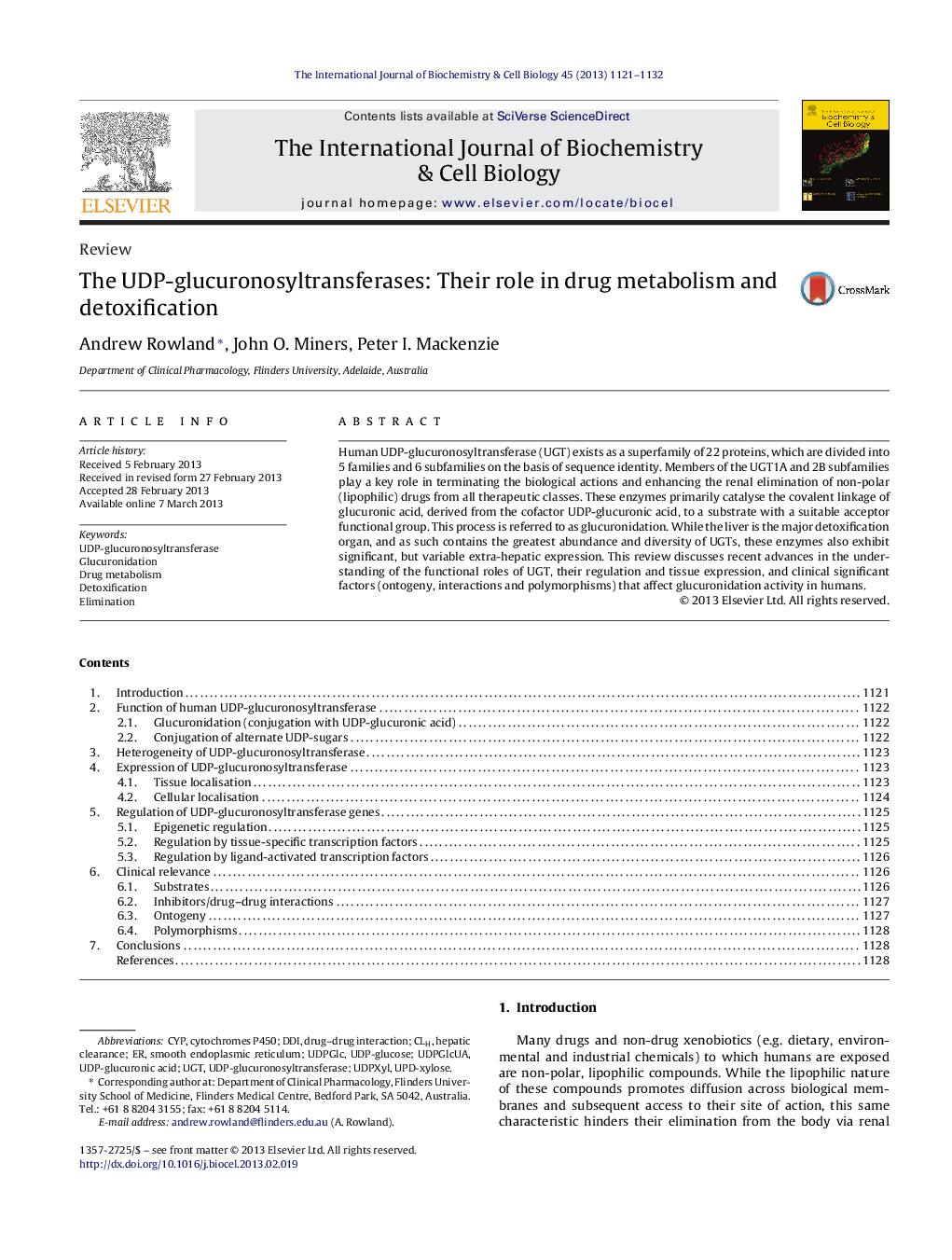| Article ID | Journal | Published Year | Pages | File Type |
|---|---|---|---|---|
| 1983787 | The International Journal of Biochemistry & Cell Biology | 2013 | 12 Pages |
Human UDP-glucuronosyltransferase (UGT) exists as a superfamily of 22 proteins, which are divided into 5 families and 6 subfamilies on the basis of sequence identity. Members of the UGT1A and 2B subfamilies play a key role in terminating the biological actions and enhancing the renal elimination of non-polar (lipophilic) drugs from all therapeutic classes. These enzymes primarily catalyse the covalent linkage of glucuronic acid, derived from the cofactor UDP-glucuronic acid, to a substrate with a suitable acceptor functional group. This process is referred to as glucuronidation. While the liver is the major detoxification organ, and as such contains the greatest abundance and diversity of UGTs, these enzymes also exhibit significant, but variable extra-hepatic expression. This review discusses recent advances in the understanding of the functional roles of UGT, their regulation and tissue expression, and clinical significant factors (ontogeny, interactions and polymorphisms) that affect glucuronidation activity in humans.
